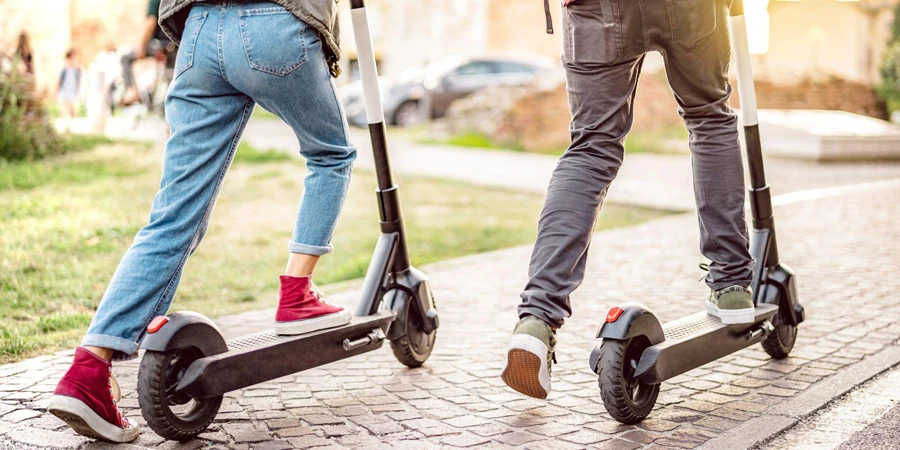Table of Contents
– Introduction
– Market Overview
– Key Technology and Design Innovations
– Top-Selling Models Driving Market Trends
– Conclusion
Introduction
The year 2024 marks a pivotal moment in the evolution of urban transportation, with electric scooters leading the charge. As cities worldwide strive for greener, more efficient mobility solutions, electric scooters emerge as both a practical and eco-friendly choice, reshaping the way we navigate our urban landscapes.
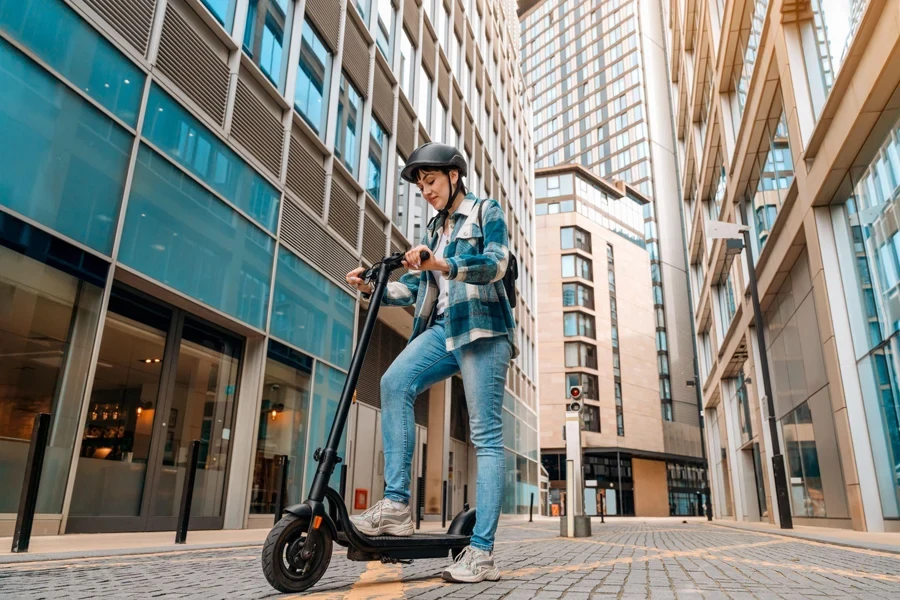
Market Overview
The electric scooter market has witnessed exponential growth, with projections indicating a leap from USD 20.33 billion in 2022 to an impressive USD 34.91 billion by 2030, boasting a CAGR of 7.00%. This surge is fueled by an increasing consumer shift towards sustainable transportation, coupled with technological advancements and supportive government policies. The Asia Pacific region, in particular, dominates the market share, driven by dense urban populations and escalating environmental concerns. Niu and Yadea are the major players with a significant market share of over 15% together in the electric scooters industry.
Key Technology and Design Innovations
The electric scooter market is rapidly evolving, driven by advancements in technology, design, and features that cater to consumer demands for convenience, safety, and sustainability. Here’s a comprehensive overview of the latest trends shaping the electric scooter landscape:
Technology Innovations
1. Battery Technology
Lithium-ion batteries are the industry standard for electric scooters due to their high energy density, which allows them to store more energy per weight, providing longer ranges for scooters. They are also lightweight, contributing to the portability and efficiency of the scooters, and they can be charged relatively quickly, with some reaching 90% charge in just two hours. However, they do have limitations, such as a tendency to overheat and a risk of explosion if mishandled, and they can lose potency after 500-1000 charge cycles.
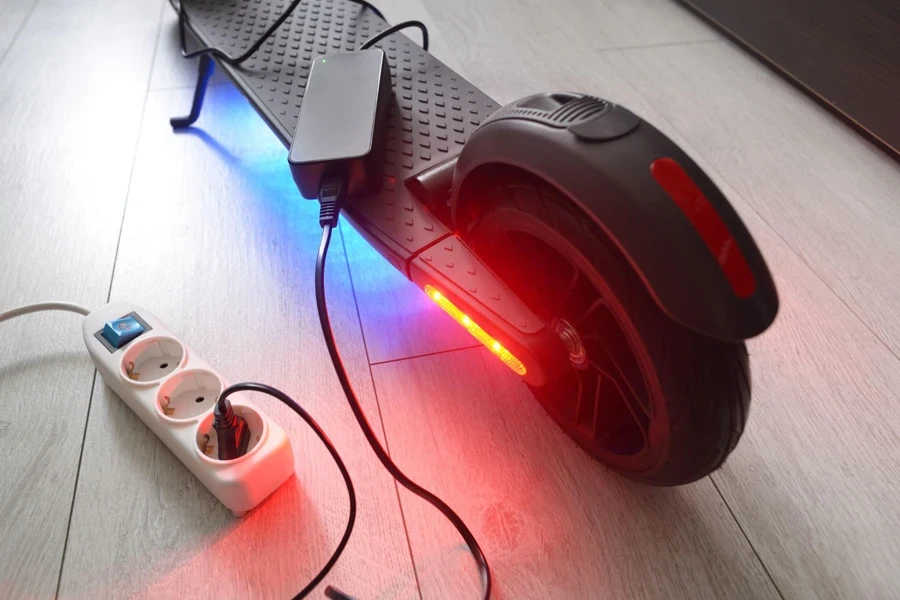
Solid-state batteries (SSBs) are emerging as a promising alternative, offering improved energy density, which enables scooters to travel greater distances on a single charge. They also boast faster charging capabilities, reducing downtime between rides, and are potentially safer due to their non-flammable, inorganic solid electrolytes, which reduce the risk of fire or explosion. Additionally, solid-state batteries can handle a wider range of operating temperatures, making them more reliable in various weather conditions, and they are expected to have longer life spans due to reduced degradation mechanisms.
2. Wireless Charging
Inductive charging technology, which uses an electromagnetic field to transfer energy between a charging pad and the scooter’s battery without physical contact, is emerging as a potential solution for electric scooters. This technology eliminates the need for cables and connectors, providing a seamless and convenient charging experience. Users can simply park their scooter over a charging pad, and the battery will begin charging automatically. Wireless charging systems can be integrated into public infrastructure, such as sidewalks or parking spaces, enabling riders to charge their scooters while parked or during brief stops. This technology also reduces the risk of water damage and ensures a more robust and durable charging solution, as there are no exposed electrical contacts. However, wireless charging is currently less efficient than wired charging, and the technology is still relatively expensive to implement on a large scale.
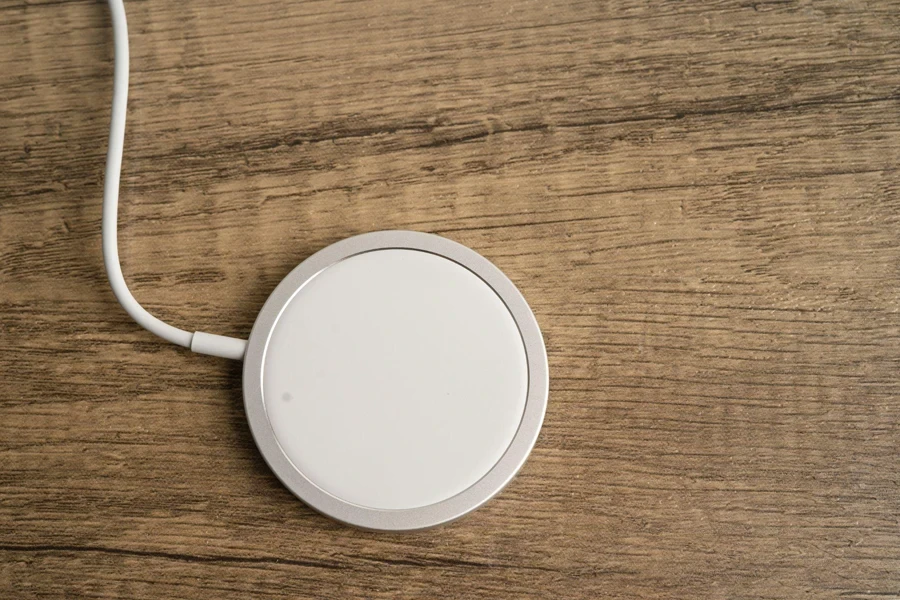
3. Connected Mobility
Electric scooters are integrating advanced connectivity features, such as GPS navigation systems that provide turn-by-turn directions and real-time traffic updates, enhancing the rider’s ability to plan efficient routes. Smartphone integration allows riders to access scooter data, control settings, and even locate their vehicle through a mobile app. Some scooters also offer remote diagnostics capabilities, enabling manufacturers or service providers to monitor the scooter’s performance, battery health, and potential issues remotely, facilitating predictive maintenance and reducing downtime. Additionally, over-the-air (OTA) software updates ensure that the scooter’s firmware and features remain up-to-date, improving security and introducing new functionalities without requiring physical maintenance visits.
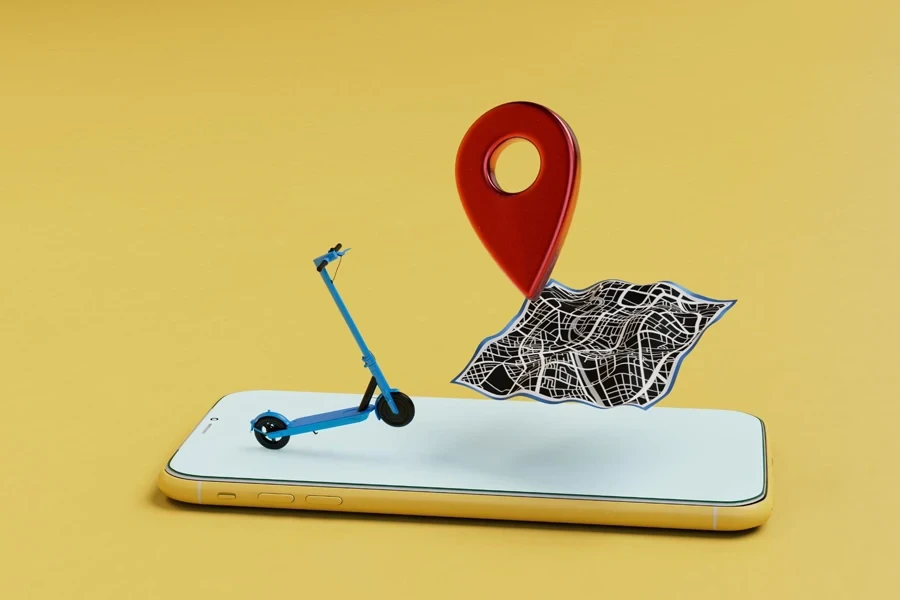
4. Artificial Intelligence (AI) and Safety
AI in electric scooters enhances safety with features like adaptive cruise control for speed adjustment based on traffic, and collision avoidance systems that detect hazards and take preventive action. AI also supports predictive maintenance, identifying potential issues early for proactive repairs, and optimizes battery management to extend range and life, ensuring operation within safe thermal limits.
Design and Features
1. Foldable and Lightweight Designs: There’s a growing market for electric scooters that are easy to fold and lightweight, making them convenient for storage and portability, especially in urban environments where space is at a premium.
2. Swappable Batteries: Electric scooters with swappable batteries allow riders to easily exchange depleted batteries for fully charged ones, reducing downtime and extending the range of journeys. This feature enhances convenience and makes electric scooters a more practical mode of transportation.
3. Enhanced Safety Features: Modern electric scooters are equipped with advanced safety features such as improved braking systems, better suspension, and integrated lights for increased visibility. Some models also come with smartphone apps that provide real-time data on speed, battery life, and navigation, further enhancing rider safety and control.
4. Hybrid Designs: The blending of aesthetics from mopeds, scooters, and electric bikes into hybrid designs is becoming popular. These designs offer a balance between functionality and style, catering to a wide range of commuter preferences.
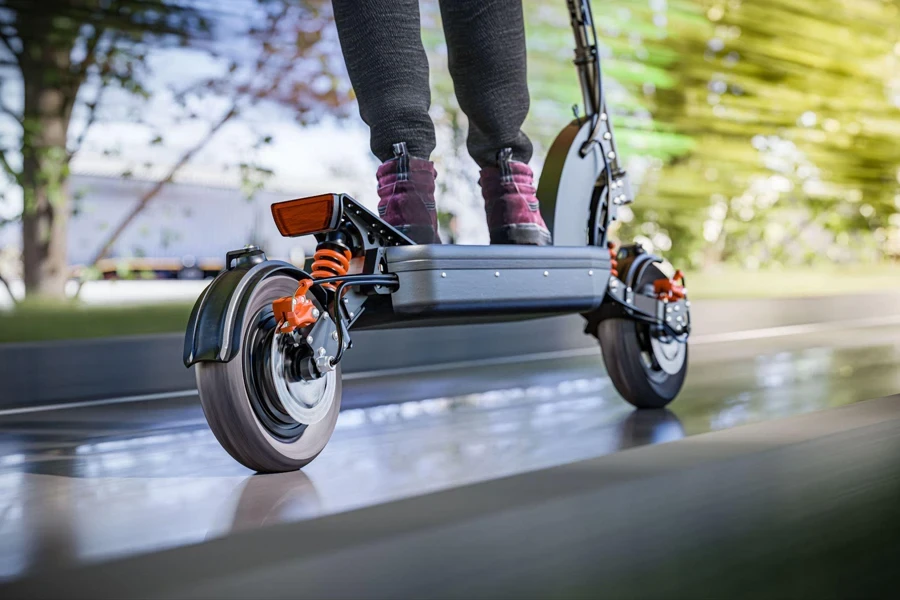
Top-Selling Models Driving Market Trends
The Speedster: TurboEco Max
The TurboEco Max boasts a top speed of 28 mph (45 km/h), powered by a 1000W brushless DC motor that delivers exhilarating acceleration. Its aerodynamic design, featuring a sleek body and large pneumatic tires, minimizes air resistance and rolling resistance, contributing to its impressive energy efficiency with a range of up to 40 miles (64 km) on a single charge. The scooter’s dual braking system, comprising disc brakes and regenerative braking, ensures reliable stopping power while extending battery life.
The Urban Warrior: CityGlide 2.0
Built for the rigors of city life, the CityGlide 2.0 features a rugged aluminum alloy frame and 10-inch pneumatic tires that can tackle uneven terrain with ease. Its foldable design allows for convenient storage and portability, making it ideal for multimodal commuting. The scooter’s integrated LED display provides real-time data on speed, battery level, and distance traveled, while Bluetooth connectivity enables seamless integration with a dedicated mobile app for navigation, ride tracking, and customizable settings. Additionally, the CityGlide 2.0 offers a range of up to 25 miles (40 km) on a single charge, ensuring reliable performance for daily urban commutes.
The Long-Distance Cruiser: RangeMaster Pro
The RangeMaster Pro is designed for extended range and comfort, with a powerful 1200W motor and a high-capacity 60V lithium-ion battery that delivers an impressive range of up to 60 miles (96 km) on a single charge. Its ergonomic design features a wide, padded seat and adjustable handlebars, ensuring a comfortable riding position for long journeys. The scooter’s dual suspension system, comprising front and rear shock absorbers, smooths out bumps and uneven surfaces, while the large 12-inch pneumatic tires provide excellent traction and stability. Additionally, the RangeMaster Pro incorporates regenerative braking technology, which captures energy during deceleration and feeds it back into the battery, further extending its range.
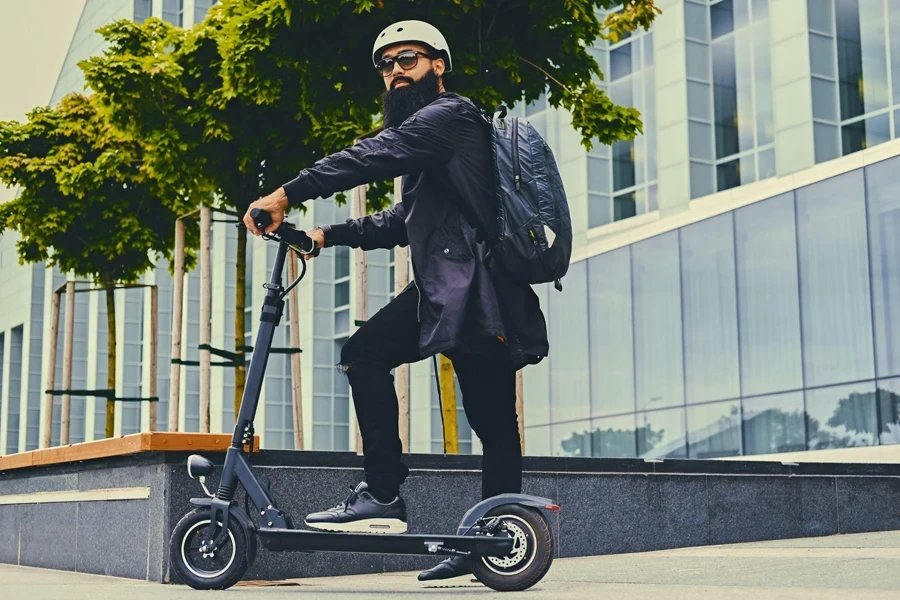
Conclusion
The electric scooter market in 2024 is vibrant and rapidly evolving, driven by technological innovation, consumer demand for sustainable transportation, and a growing emphasis on smart, connected mobility solutions. As we look to the future, electric scooters stand at the forefront of urban transportation, promising a greener, more efficient, and technologically advanced way to move through our cities. Please hit the “Subscribe” button to check more articles related to your business and interests in sports.
